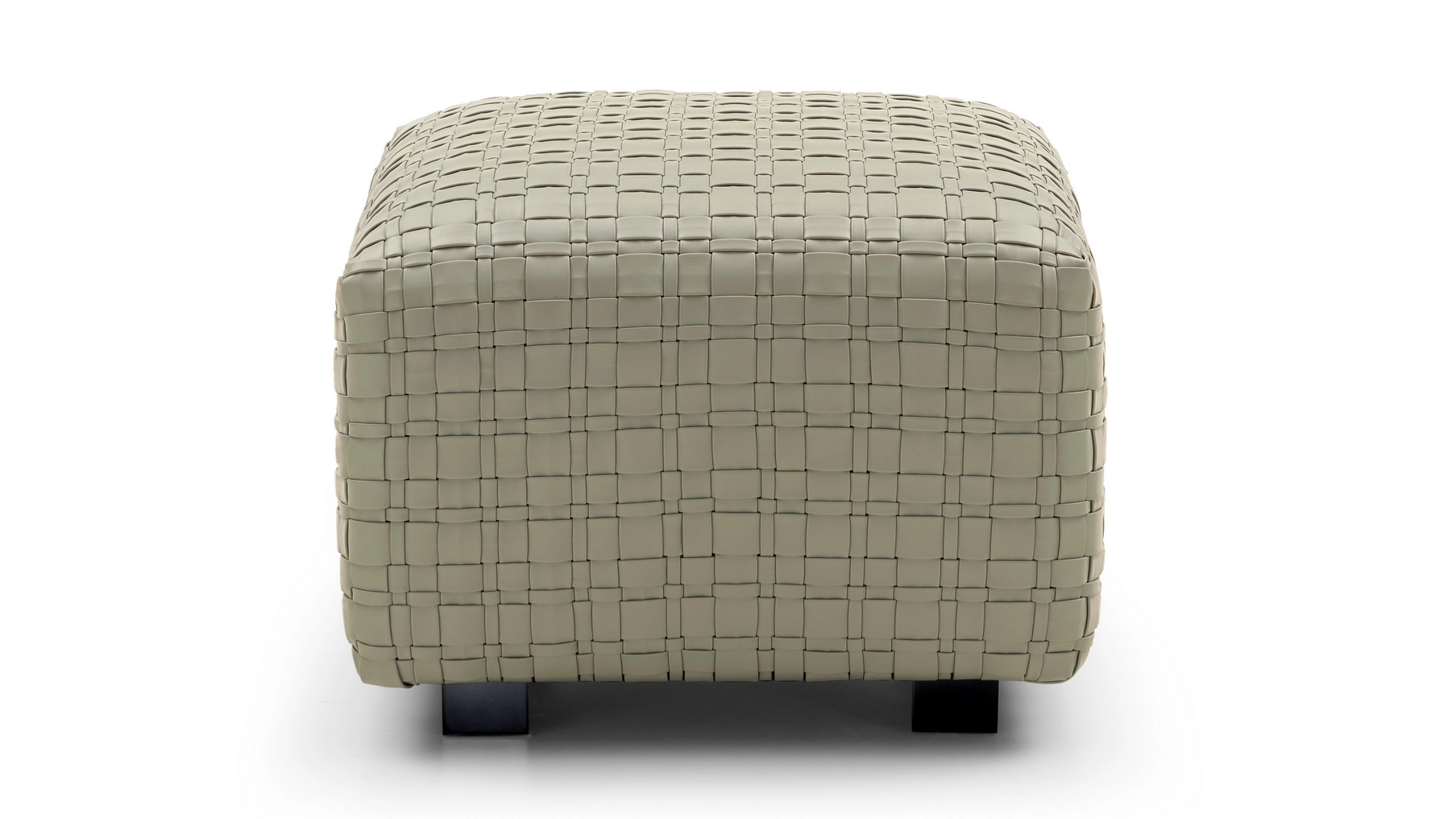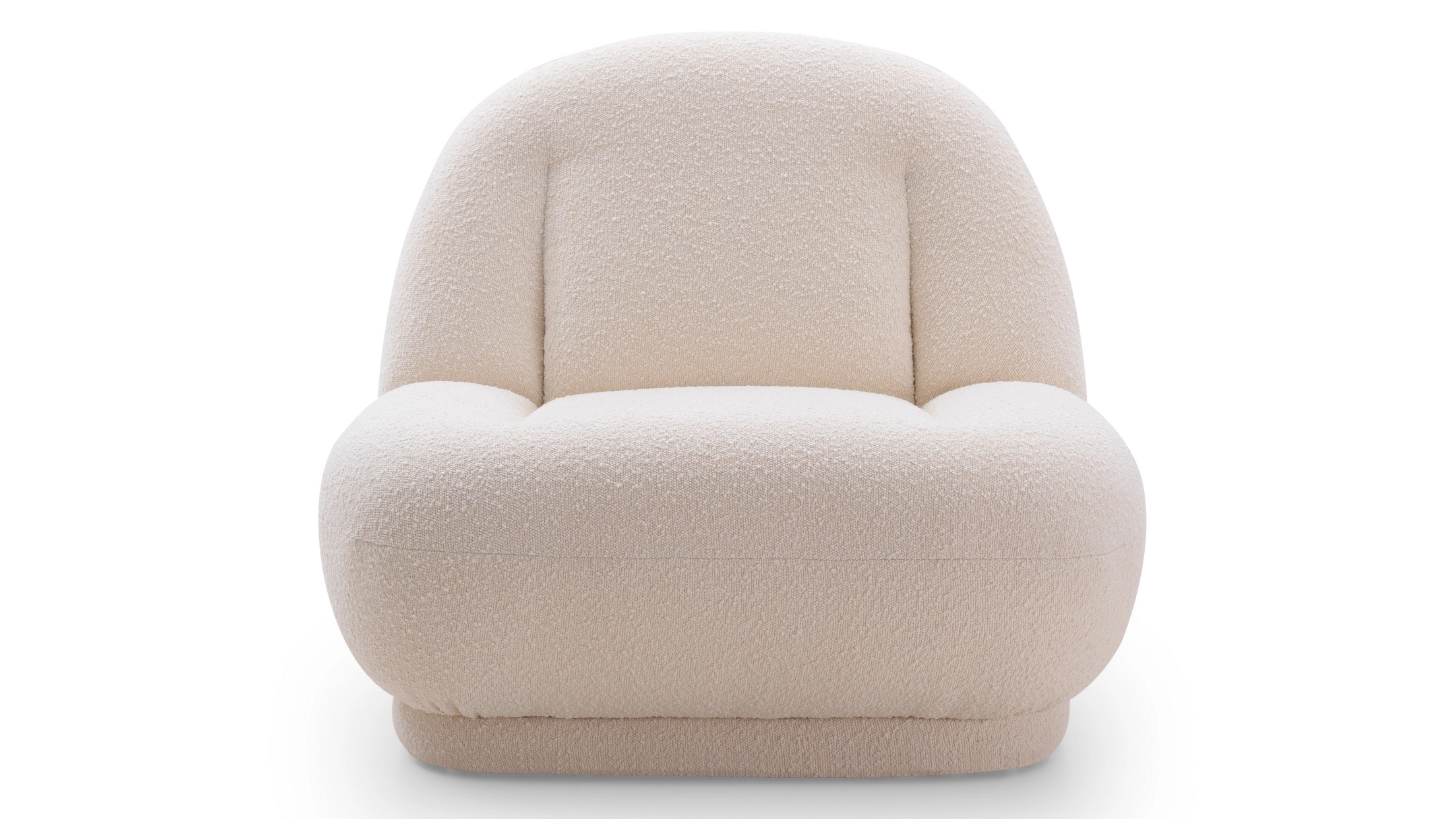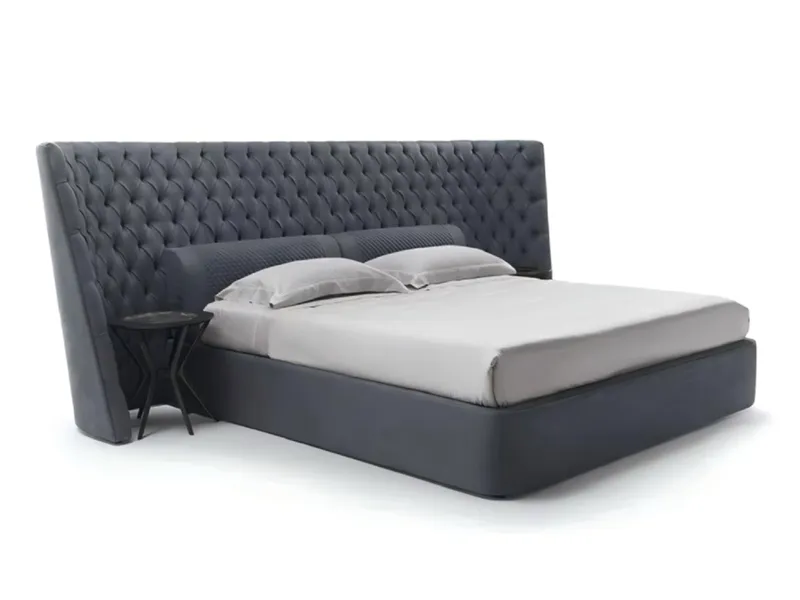The right chair supports your posture, enhances productivity and relaxation, and elevates your interior design. This guide covers chair types and use cases, ergonomics, materials, sizing and layout, styling tips, and care so you can select seats that look good and feel great.
Chair Types and Use Cases
- Dining chairs: Balanced comfort and support for meals; choose durable, easy-to-clean finishes.
- Office/ergonomic chairs: Adjustable height, lumbar support, seat depth, tilt tension, and breathable mesh or supportive foam.
- Accent chairs: Visual focal points for living rooms and bedrooms; swivel, wingback, and barrel chairs add personality.
- Lounge chairs & recliners: Deep seats and recline mechanisms for relaxation; check head and lumbar support.
- Armchairs & club chairs: Cozy, enveloping shapes perfect for reading nooks.
- Bar & counter stools: Verify seat height vs. counter height; footrest and backrest improve comfort.
- Outdoor chairs: Weather-resistant frames and quick-dry cushions built for the elements.
Ergonomics and Comfort
Support natural alignment to reduce strain:
- For office chairs, aim for knees at ~90°, feet flat, and neutral wrists at the keyboard.
- Seat depth: maintain 2–3 inches (5–7.5 cm) of clearance behind knees.
- Lumbar support: adjustable or well-contoured backrest that supports the lower back.
- Armrests: adjustable height and width to keep shoulders relaxed.
- Movement: tilt, recline, and dynamic mechanisms encourage healthy micro-movements.
Materials and Upholstery
- Wood: Oak, ash, walnut for strength; look for mortise-and-tenon or dowel joinery.
- Metal: Steel and aluminum frames; powder coating prevents rust.
- Plastics: Polypropylene and fiberglass for molded designs; lightweight and easy to clean.
- Upholstery: Performance fabric resists stains; leather is durable and patinas well; velvet adds luxe texture.
Sizing and Layout
- Dining sets: Table height ~30 in (76 cm); chair seat height 17–19 in (43–48 cm); 24 in (61 cm) width per person.
- Bar vs. counter stools: Counter seat 24–26 in (61–66 cm) for 36 in (91 cm) counters; bar seat 28–30 in (71–76 cm) for 42 in (107 cm) bars.
- Living rooms: Keep ~18 in (46 cm) between chair and coffee table; allow 36 in (91 cm) for walkways.
Styling Tips
- Mix materials for depth: a leather armchair with a wood side table and metal lamp.
- Balance silhouettes: pair slim dining chairs with chunkier tables, and vice versa.
- Unify with color: repeat an accent color from art or rugs in chair upholstery or cushions.
- Consider maintenance: performance fabrics and darker tones for high-traffic dining rooms.
Care and Maintenance
- Follow fabric codes: W (water-based), S (solvent), WS (either), X (vacuum only).
- Condition leather every 6–12 months; keep away from direct sun and heat vents.
- Add felt pads under legs; re-tighten screws and joints to prevent wobble.
- Spot clean promptly; test cleaners in inconspicuous areas.
Buying Checklist (Quick Reference)
- Match chair type to use case: dining, office, lounge, or outdoor.
- Test ergonomics: lumbar support, seat depth, adjustability, and overall comfort.
- Confirm sizing: seat height vs. table/desk; spacing for layouts and walkways.
- Choose durable materials and easy-to-clean upholstery for your environment.
- Align style and color with the room’s palette and textures.
FAQs
What is the best chair for long hours at a desk?
An ergonomic office chair with adjustable lumbar support, seat depth, and tilt mechanisms, plus a breathable back, is ideal for extended work sessions.
How tall should dining chairs be?
For standard 30 in (76 cm) dining tables, choose 17–19 in (43–48 cm) seat height and allow 10–12 in (25–30 cm) of clearance between seat and tabletop.
Conclusion: Choose Chairs That Support Life
The best chairs combine ergonomic support, durable materials, and a style that complements your home. Prioritize fit and comfort first, then pick finishes and colors that unify the space for seating that looks good and feels better.
Choosing the right bed improves sleep quality, posture, and bedroom design. This guide covers bed sizes, mattress types and firmness, bed frames and materials, styling tips, and long-term care so you can buy with confidence.
Bed Types and Styles
- Platform bed: Low profile with slats; no box spring needed; modern and supportive.
- Panel bed: Headboard + footboard; usually used with a box spring; classic silhouette.
- Storage bed: Drawers or lift-up base for hidden storage; ideal for small rooms.
- Upholstered bed: Padded headboard/rails; soft look and great for reading in bed.
- Canopy / four-poster: Statement height and drama; traditional or contemporary frames.
- Adjustable base: Motorized head/foot incline; reduces snoring and pressure points.
Bed Sizes and Room Fit
Pick a size that supports your sleep needs and room layout:
- Twin (38×75 in / 96.5×190.5 cm)
- Twin XL (38×80 in / 96.5×203 cm)
- Full/Double (54×75 in / 137×190.5 cm)
- Queen (60×80 in / 152×203 cm)
- King (76×80 in / 193×203 cm)
- California King (72×84 in / 183×213 cm)
Leave 24–36 inches (61–91 cm) around the bed for comfortable movement. Consider mattress thickness and total bed height for ease of entry/exit.
Mattress Types and Firmness
- Memory foam: Contouring pressure relief; excellent motion isolation; can sleep warm.
- Latex: Responsive, breathable, and durable; naturally resistant to dust mites.
- Hybrid: Pocketed coils + foam/latex; balanced support and airflow.
- Innerspring: Traditional coil feel; add a plush topper for pressure relief if needed.
Firmness guide: Side sleepers—medium-soft to medium; back sleepers—medium to medium-firm; stomach sleepers—firm to keep hips aligned. Look for edge support, cooling features, and certifications (CertiPUR-US, OEKO-TEX).
Frames and Construction Quality
- Hardwood (oak, maple, birch): Rigid and long-lasting; best for primary beds.
- Metal (steel, iron): Strong, slim profiles; check welds and squeak resistance.
- Engineered wood (plywood): Stable and cost-effective; avoid flimsy particle board.
For slatted bases, aim for 2–3 inch (5–7.5 cm) spacing (or mattress-brand spec), a center support rail for Queen and larger, and sturdy fasteners. Assembly should feel tight and creak-free.
Storage and Accessories
- Under-bed drawers: Great for linens and out-of-season clothing.
- Headboards: Upholstered for comfort; wood or rattan for texture and style.
- Nightstands: Height within 2–4 inches (5–10 cm) of mattress top for easy reach.
- Lighting: Wall sconces or adjustable lamps free up surface space.
Styling Ideas
- Bedding: Percale for crisp coolness; sateen for silky drape; linen for breathable texture.
- Layers: Combine duvet + quilt/coverlet; add throws for color and seasonal warmth.
- Palette: Keep the bed neutral for longevity; rotate accent pillows to refresh.
Maintenance and Care
- Rotate mattresses quarterly (flip only if two-sided).
- Use a waterproof protector; wash sheets weekly; vacuum mattress surface.
- Re-tighten hardware annually; replace worn slats or center supports.
- Spot clean upholstered headboards with fabric-appropriate cleaners.
Buying Checklist (Quick Reference)
- Choose size based on sleepers and room clearance (24–36 in).
- Select mattress type/firmness for your sleep position and temperature needs.
- Verify frame quality: hardwood/steel, center support, slat spacing.
- Plan storage and accessories: drawers, headboard, lighting, nightstands.
- Set a budget: invest in mattress and frame; save on easily replaceable textiles.
FAQs
Which bed size is best for couples?
Queen fits most bedrooms and couples; King offers maximum width for families and restless sleepers. Consider room size and clearance.
Do I need a box spring?
Platform beds with slats typically do not require a box spring. Panel beds often do. Follow the mattress brand’s recommendations.
How long should a mattress last?
Quality mattresses last 7–10 years on average. Replace sooner if you notice sagging, pain, or poor sleep quality.
Conclusion: Sleep Better with the Right Bed
The best bed combines the correct size, supportive mattress, and a sturdy frame, finished with bedding that matches your style. Prioritize fit and construction first, then layer in comfort and design for years of restorative sleep.
When it comes to furnishing your living space, few pieces of furniture are as important as the sofa. This versatile seating solution serves as the focal point of most living rooms, providing comfort, style, and functionality for daily life. Whether you're hosting guests, enjoying a movie night, or simply relaxing after a long day, your sofa plays a crucial role in creating the perfect atmosphere for your home.
The Evolution of the Sofa: From Ancient Origins to Modern Comfort
The history of the sofa dates back thousands of years, with early forms appearing in ancient Egypt and Rome. The word "sofa" itself derives from the Arabic word "suffah," which referred to a raised platform covered with cushions and blankets. Over the centuries, sofas have evolved from simple wooden benches with basic cushioning to the sophisticated, ergonomically designed pieces we know today.
During the 17th and 18th centuries, European craftsmen began developing more elaborate sofa designs, incorporating intricate woodwork, luxurious fabrics, and improved comfort features. The Industrial Revolution brought mass production techniques, making sofas more accessible to the general public. Today's sofas combine traditional craftsmanship with modern materials and technology, offering unprecedented levels of comfort and durability.
Understanding Different Sofa Styles and Their Characteristics
Traditional Sofas
Traditional sofas embody classic elegance with their timeless designs and refined details. These pieces often feature rolled arms, button tufting, and rich fabrics like velvet or leather. Chesterfield sofas, with their distinctive deep button tufting and rolled arms, represent one of the most iconic traditional styles. These sofas work beautifully in formal living rooms and complement classic interior design schemes.
Contemporary and Modern Sofas
Contemporary sofas emphasize clean lines, minimalist aesthetics, and functional design. They often feature straight arms, sleek profiles, and neutral colors that blend seamlessly with modern decor. Mid-century modern sofas, popularized in the 1950s and 1960s, have experienced a resurgence in recent years, offering a perfect balance between retro charm and contemporary appeal.
Sectional Sofas
Sectional sofas provide maximum seating capacity and versatility, making them ideal for large families or those who frequently entertain guests. These modular pieces can be configured in various arrangements, including L-shapes, U-shapes, or even circular formations. Many sectionals include features like reclining seats, built-in storage, or convertible sections that transform into beds.
Sleeper Sofas
Also known as sofa beds or convertible sofas, these dual-purpose pieces serve as both seating and sleeping solutions. Modern sleeper sofas have come a long way from their uncomfortable predecessors, now offering high-quality mattresses and easy conversion mechanisms. They're perfect for small spaces, guest rooms, or anyone who needs flexible furniture options.
Choosing the Right Size and Configuration
Selecting the appropriate sofa size requires careful consideration of your room dimensions, traffic flow, and seating needs. A general rule of thumb is to leave at least 18 inches of walking space around your sofa, though 24–36 inches is preferable for comfortable movement.
For smaller rooms, consider a loveseat or apartment-sized sofa (typically 72–84 inches long). Standard sofas range from 84–96 inches, while large sofas can extend beyond 100 inches. Sectionals require even more space but can efficiently utilize corner areas that might otherwise go unused.
The depth of your sofa is equally important. Standard depths range from 32–40 inches, with deeper sofas offering more lounging comfort but requiring more floor space. Consider your family's preferences – some people prefer to sit upright with their feet on the floor, while others enjoy sinking into deep cushions.
Material Matters: Fabric vs. Leather
Fabric Sofas
Fabric sofas offer incredible variety in terms of colors, patterns, and textures. Popular fabric choices include:
- Cotton and Cotton Blends: Breathable, comfortable, and available in countless colors and patterns. However, pure cotton can wrinkle and fade over time.
- Linen: Offers a relaxed, casual aesthetic with excellent breathability. Linen sofas work well in coastal or farmhouse-style interiors but may wrinkle easily.
- Microfiber: Synthetic fabric that's stain-resistant, durable, and easy to clean. It's an excellent choice for families with children or pets.
- Velvet: Luxurious and elegant, velvet adds sophistication to any room. Modern performance velvets are more durable and stain-resistant than traditional options.
Leather Sofas
Leather sofas represent the pinnacle of luxury and durability. High-quality leather actually improves with age, developing a beautiful patina over time. Leather is naturally stain-resistant and easy to clean, making it ideal for busy households. However, leather sofas typically require a higher initial investment and may feel cold in winter or sticky in summer without proper climate control.
Frame Construction and Quality Indicators
The frame forms the foundation of any quality sofa, and understanding construction methods can help you make an informed purchase. Hardwood frames, particularly those made from kiln-dried oak, maple, or birch, offer superior durability and longevity. Avoid sofas with frames made from particle board or softwoods, as these materials are prone to warping and breaking.
Look for frames joined with dowels, screws, and corner blocks rather than just staples or nails. Eight-way hand-tied springs represent the gold standard for sofa construction, providing excellent support and durability. However, sinuous springs (S-springs) can also offer good support at a lower price point.
High-density foam cushions maintain their shape better than low-density alternatives, while down-filled cushions provide luxurious comfort but require regular fluffing. Many modern sofas use a combination of foam and down for optimal comfort and support.
Color Psychology and Design Integration
The color of your sofa significantly impacts your room's overall atmosphere and mood. Neutral colors like beige, gray, and cream offer versatility and timeless appeal, allowing you to change your decor accessories without replacing major furniture pieces. These colors also make rooms appear larger and brighter.
Bold colors can create dramatic focal points and express personality, but they may limit your decorating options over time. If you love vibrant colors, consider incorporating them through throw pillows, blankets, or accent chairs while keeping your sofa neutral.
Dark colors like navy, charcoal, or black can add sophistication and hide stains well, but they may make small rooms feel cramped. Light colors create an airy, open feeling but show dirt and wear more readily.
Maintenance and Care Tips
Proper maintenance extends your sofa's lifespan and keeps it looking its best. Regular vacuuming removes dust, pet hair, and debris that can wear down fabric fibers. Use appropriate attachments to clean crevices and under cushions where crumbs and small objects accumulate.
For fabric sofas, check the manufacturer's cleaning codes: "W" means water-based cleaners only, "S" indicates solvent-based cleaners, "WS" allows both types, and "X" means vacuum only. Professional cleaning every 12–18 months helps maintain appearance and hygiene.
Leather sofas require different care, including regular dusting and conditioning every 6–12 months to prevent cracking and maintain suppleness. Keep leather furniture away from direct sunlight and heat sources to prevent fading and drying.
Rotate and flip cushions regularly to ensure even wear, and address spills immediately to prevent permanent staining. Consider using furniture protectors if you have pets or young children.
Conclusion: Making the Perfect Choice
Selecting the right sofa involves balancing numerous factors including style, size, material, quality, and budget. Take time to test different options in person, paying attention to comfort, support, and build quality. Consider your lifestyle, family needs, and long-term plans when making your decision.
Remember that a quality sofa is an investment that should serve you well for many years. While it may be tempting to choose the least expensive option, investing in better construction and materials often proves more economical in the long run. With proper care and maintenance, a well-chosen sofa will provide comfort, style, and satisfaction for decades to come.
Whether you prefer the classic elegance of a traditional Chesterfield, the clean lines of a modern sectional, or the versatility of a sleeper sofa, the perfect piece is waiting to transform your living space into a comfortable, stylish haven that reflects your personal taste and meets your family's needs.
Beds GEF-B2007-01
Fabric

The right chair supports your posture, enhances productivity and relaxation, and elevates your interior design. This guide covers chair types and use cases, ergonomics, materials, sizing and layout, styling tips, and care so you can select seats that look good and feel great.
Chair Types and Use Cases
- Dining chairs: Balanced comfort and support for meals; choose durable, easy-to-clean finishes.
- Office/ergonomic chairs: Adjustable height, lumbar support, seat depth, tilt tension, and breathable mesh or supportive foam.
- Accent chairs: Visual focal points for living rooms and bedrooms; swivel, wingback, and barrel chairs add personality.
- Lounge chairs & recliners: Deep seats and recline mechanisms for relaxation; check head and lumbar support.
- Armchairs & club chairs: Cozy, enveloping shapes perfect for reading nooks.
- Bar & counter stools: Verify seat height vs. counter height; footrest and backrest improve comfort.
- Outdoor chairs: Weather-resistant frames and quick-dry cushions built for the elements.
Ergonomics and Comfort
Support natural alignment to reduce strain:
- For office chairs, aim for knees at ~90°, feet flat, and neutral wrists at the keyboard.
- Seat depth: maintain 2–3 inches (5–7.5 cm) of clearance behind knees.
- Lumbar support: adjustable or well-contoured backrest that supports the lower back.
- Armrests: adjustable height and width to keep shoulders relaxed.
- Movement: tilt, recline, and dynamic mechanisms encourage healthy micro-movements.
Materials and Upholstery
- Wood: Oak, ash, walnut for strength; look for mortise-and-tenon or dowel joinery.
- Metal: Steel and aluminum frames; powder coating prevents rust.
- Plastics: Polypropylene and fiberglass for molded designs; lightweight and easy to clean.
- Upholstery: Performance fabric resists stains; leather is durable and patinas well; velvet adds luxe texture.
Sizing and Layout
- Dining sets: Table height ~30 in (76 cm); chair seat height 17–19 in (43–48 cm); 24 in (61 cm) width per person.
- Bar vs. counter stools: Counter seat 24–26 in (61–66 cm) for 36 in (91 cm) counters; bar seat 28–30 in (71–76 cm) for 42 in (107 cm) bars.
- Living rooms: Keep ~18 in (46 cm) between chair and coffee table; allow 36 in (91 cm) for walkways.
Styling Tips
- Mix materials for depth: a leather armchair with a wood side table and metal lamp.
- Balance silhouettes: pair slim dining chairs with chunkier tables, and vice versa.
- Unify with color: repeat an accent color from art or rugs in chair upholstery or cushions.
- Consider maintenance: performance fabrics and darker tones for high-traffic dining rooms.
Care and Maintenance
- Follow fabric codes: W (water-based), S (solvent), WS (either), X (vacuum only).
- Condition leather every 6–12 months; keep away from direct sun and heat vents.
- Add felt pads under legs; re-tighten screws and joints to prevent wobble.
- Spot clean promptly; test cleaners in inconspicuous areas.
Buying Checklist (Quick Reference)
- Match chair type to use case: dining, office, lounge, or outdoor.
- Test ergonomics: lumbar support, seat depth, adjustability, and overall comfort.
- Confirm sizing: seat height vs. table/desk; spacing for layouts and walkways.
- Choose durable materials and easy-to-clean upholstery for your environment.
- Align style and color with the room’s palette and textures.
FAQs
What is the best chair for long hours at a desk?
An ergonomic office chair with adjustable lumbar support, seat depth, and tilt mechanisms, plus a breathable back, is ideal for extended work sessions.
How tall should dining chairs be?
For standard 30 in (76 cm) dining tables, choose 17–19 in (43–48 cm) seat height and allow 10–12 in (25–30 cm) of clearance between seat and tabletop.
Conclusion: Choose Chairs That Support Life
The best chairs combine ergonomic support, durable materials, and a style that complements your home. Prioritize fit and comfort first, then pick finishes and colors that unify the space for seating that looks good and feels better.

Choosing the right bed improves sleep quality, posture, and bedroom design. This guide covers bed sizes, mattress types and firmness, bed frames and materials, styling tips, and long-term care so you can buy with confidence.
Bed Types and Styles
- Platform bed: Low profile with slats; no box spring needed; modern and supportive.
- Panel bed: Headboard + footboard; usually used with a box spring; classic silhouette.
- Storage bed: Drawers or lift-up base for hidden storage; ideal for small rooms.
- Upholstered bed: Padded headboard/rails; soft look and great for reading in bed.
- Canopy / four-poster: Statement height and drama; traditional or contemporary frames.
- Adjustable base: Motorized head/foot incline; reduces snoring and pressure points.
Bed Sizes and Room Fit
Pick a size that supports your sleep needs and room layout:
- Twin (38×75 in / 96.5×190.5 cm)
- Twin XL (38×80 in / 96.5×203 cm)
- Full/Double (54×75 in / 137×190.5 cm)
- Queen (60×80 in / 152×203 cm)
- King (76×80 in / 193×203 cm)
- California King (72×84 in / 183×213 cm)
Leave 24–36 inches (61–91 cm) around the bed for comfortable movement. Consider mattress thickness and total bed height for ease of entry/exit.
Mattress Types and Firmness
- Memory foam: Contouring pressure relief; excellent motion isolation; can sleep warm.
- Latex: Responsive, breathable, and durable; naturally resistant to dust mites.
- Hybrid: Pocketed coils + foam/latex; balanced support and airflow.
- Innerspring: Traditional coil feel; add a plush topper for pressure relief if needed.
Firmness guide: Side sleepers—medium-soft to medium; back sleepers—medium to medium-firm; stomach sleepers—firm to keep hips aligned. Look for edge support, cooling features, and certifications (CertiPUR-US, OEKO-TEX).
Frames and Construction Quality
- Hardwood (oak, maple, birch): Rigid and long-lasting; best for primary beds.
- Metal (steel, iron): Strong, slim profiles; check welds and squeak resistance.
- Engineered wood (plywood): Stable and cost-effective; avoid flimsy particle board.
For slatted bases, aim for 2–3 inch (5–7.5 cm) spacing (or mattress-brand spec), a center support rail for Queen and larger, and sturdy fasteners. Assembly should feel tight and creak-free.
Storage and Accessories
- Under-bed drawers: Great for linens and out-of-season clothing.
- Headboards: Upholstered for comfort; wood or rattan for texture and style.
- Nightstands: Height within 2–4 inches (5–10 cm) of mattress top for easy reach.
- Lighting: Wall sconces or adjustable lamps free up surface space.
Styling Ideas
- Bedding: Percale for crisp coolness; sateen for silky drape; linen for breathable texture.
- Layers: Combine duvet + quilt/coverlet; add throws for color and seasonal warmth.
- Palette: Keep the bed neutral for longevity; rotate accent pillows to refresh.
Maintenance and Care
- Rotate mattresses quarterly (flip only if two-sided).
- Use a waterproof protector; wash sheets weekly; vacuum mattress surface.
- Re-tighten hardware annually; replace worn slats or center supports.
- Spot clean upholstered headboards with fabric-appropriate cleaners.
Buying Checklist (Quick Reference)
- Choose size based on sleepers and room clearance (24–36 in).
- Select mattress type/firmness for your sleep position and temperature needs.
- Verify frame quality: hardwood/steel, center support, slat spacing.
- Plan storage and accessories: drawers, headboard, lighting, nightstands.
- Set a budget: invest in mattress and frame; save on easily replaceable textiles.
FAQs
Which bed size is best for couples?
Queen fits most bedrooms and couples; King offers maximum width for families and restless sleepers. Consider room size and clearance.
Do I need a box spring?
Platform beds with slats typically do not require a box spring. Panel beds often do. Follow the mattress brand’s recommendations.
How long should a mattress last?
Quality mattresses last 7–10 years on average. Replace sooner if you notice sagging, pain, or poor sleep quality.
Conclusion: Sleep Better with the Right Bed
The best bed combines the correct size, supportive mattress, and a sturdy frame, finished with bedding that matches your style. Prioritize fit and construction first, then layer in comfort and design for years of restorative sleep.

When it comes to furnishing your living space, few pieces of furniture are as important as the sofa. This versatile seating solution serves as the focal point of most living rooms, providing comfort, style, and functionality for daily life. Whether you're hosting guests, enjoying a movie night, or simply relaxing after a long day, your sofa plays a crucial role in creating the perfect atmosphere for your home.
The Evolution of the Sofa: From Ancient Origins to Modern Comfort
The history of the sofa dates back thousands of years, with early forms appearing in ancient Egypt and Rome. The word "sofa" itself derives from the Arabic word "suffah," which referred to a raised platform covered with cushions and blankets. Over the centuries, sofas have evolved from simple wooden benches with basic cushioning to the sophisticated, ergonomically designed pieces we know today.
During the 17th and 18th centuries, European craftsmen began developing more elaborate sofa designs, incorporating intricate woodwork, luxurious fabrics, and improved comfort features. The Industrial Revolution brought mass production techniques, making sofas more accessible to the general public. Today's sofas combine traditional craftsmanship with modern materials and technology, offering unprecedented levels of comfort and durability.
Understanding Different Sofa Styles and Their Characteristics
Traditional Sofas
Traditional sofas embody classic elegance with their timeless designs and refined details. These pieces often feature rolled arms, button tufting, and rich fabrics like velvet or leather. Chesterfield sofas, with their distinctive deep button tufting and rolled arms, represent one of the most iconic traditional styles. These sofas work beautifully in formal living rooms and complement classic interior design schemes.
Contemporary and Modern Sofas
Contemporary sofas emphasize clean lines, minimalist aesthetics, and functional design. They often feature straight arms, sleek profiles, and neutral colors that blend seamlessly with modern decor. Mid-century modern sofas, popularized in the 1950s and 1960s, have experienced a resurgence in recent years, offering a perfect balance between retro charm and contemporary appeal.
Sectional Sofas
Sectional sofas provide maximum seating capacity and versatility, making them ideal for large families or those who frequently entertain guests. These modular pieces can be configured in various arrangements, including L-shapes, U-shapes, or even circular formations. Many sectionals include features like reclining seats, built-in storage, or convertible sections that transform into beds.
Sleeper Sofas
Also known as sofa beds or convertible sofas, these dual-purpose pieces serve as both seating and sleeping solutions. Modern sleeper sofas have come a long way from their uncomfortable predecessors, now offering high-quality mattresses and easy conversion mechanisms. They're perfect for small spaces, guest rooms, or anyone who needs flexible furniture options.
Choosing the Right Size and Configuration
Selecting the appropriate sofa size requires careful consideration of your room dimensions, traffic flow, and seating needs. A general rule of thumb is to leave at least 18 inches of walking space around your sofa, though 24–36 inches is preferable for comfortable movement.
For smaller rooms, consider a loveseat or apartment-sized sofa (typically 72–84 inches long). Standard sofas range from 84–96 inches, while large sofas can extend beyond 100 inches. Sectionals require even more space but can efficiently utilize corner areas that might otherwise go unused.
The depth of your sofa is equally important. Standard depths range from 32–40 inches, with deeper sofas offering more lounging comfort but requiring more floor space. Consider your family's preferences – some people prefer to sit upright with their feet on the floor, while others enjoy sinking into deep cushions.
Material Matters: Fabric vs. Leather
Fabric Sofas
Fabric sofas offer incredible variety in terms of colors, patterns, and textures. Popular fabric choices include:
- Cotton and Cotton Blends: Breathable, comfortable, and available in countless colors and patterns. However, pure cotton can wrinkle and fade over time.
- Linen: Offers a relaxed, casual aesthetic with excellent breathability. Linen sofas work well in coastal or farmhouse-style interiors but may wrinkle easily.
- Microfiber: Synthetic fabric that's stain-resistant, durable, and easy to clean. It's an excellent choice for families with children or pets.
- Velvet: Luxurious and elegant, velvet adds sophistication to any room. Modern performance velvets are more durable and stain-resistant than traditional options.
Leather Sofas
Leather sofas represent the pinnacle of luxury and durability. High-quality leather actually improves with age, developing a beautiful patina over time. Leather is naturally stain-resistant and easy to clean, making it ideal for busy households. However, leather sofas typically require a higher initial investment and may feel cold in winter or sticky in summer without proper climate control.
Frame Construction and Quality Indicators
The frame forms the foundation of any quality sofa, and understanding construction methods can help you make an informed purchase. Hardwood frames, particularly those made from kiln-dried oak, maple, or birch, offer superior durability and longevity. Avoid sofas with frames made from particle board or softwoods, as these materials are prone to warping and breaking.
Look for frames joined with dowels, screws, and corner blocks rather than just staples or nails. Eight-way hand-tied springs represent the gold standard for sofa construction, providing excellent support and durability. However, sinuous springs (S-springs) can also offer good support at a lower price point.
High-density foam cushions maintain their shape better than low-density alternatives, while down-filled cushions provide luxurious comfort but require regular fluffing. Many modern sofas use a combination of foam and down for optimal comfort and support.
Color Psychology and Design Integration
The color of your sofa significantly impacts your room's overall atmosphere and mood. Neutral colors like beige, gray, and cream offer versatility and timeless appeal, allowing you to change your decor accessories without replacing major furniture pieces. These colors also make rooms appear larger and brighter.
Bold colors can create dramatic focal points and express personality, but they may limit your decorating options over time. If you love vibrant colors, consider incorporating them through throw pillows, blankets, or accent chairs while keeping your sofa neutral.
Dark colors like navy, charcoal, or black can add sophistication and hide stains well, but they may make small rooms feel cramped. Light colors create an airy, open feeling but show dirt and wear more readily.
Maintenance and Care Tips
Proper maintenance extends your sofa's lifespan and keeps it looking its best. Regular vacuuming removes dust, pet hair, and debris that can wear down fabric fibers. Use appropriate attachments to clean crevices and under cushions where crumbs and small objects accumulate.
For fabric sofas, check the manufacturer's cleaning codes: "W" means water-based cleaners only, "S" indicates solvent-based cleaners, "WS" allows both types, and "X" means vacuum only. Professional cleaning every 12–18 months helps maintain appearance and hygiene.
Leather sofas require different care, including regular dusting and conditioning every 6–12 months to prevent cracking and maintain suppleness. Keep leather furniture away from direct sunlight and heat sources to prevent fading and drying.
Rotate and flip cushions regularly to ensure even wear, and address spills immediately to prevent permanent staining. Consider using furniture protectors if you have pets or young children.
Conclusion: Making the Perfect Choice
Selecting the right sofa involves balancing numerous factors including style, size, material, quality, and budget. Take time to test different options in person, paying attention to comfort, support, and build quality. Consider your lifestyle, family needs, and long-term plans when making your decision.
Remember that a quality sofa is an investment that should serve you well for many years. While it may be tempting to choose the least expensive option, investing in better construction and materials often proves more economical in the long run. With proper care and maintenance, a well-chosen sofa will provide comfort, style, and satisfaction for decades to come.
Whether you prefer the classic elegance of a traditional Chesterfield, the clean lines of a modern sectional, or the versatility of a sleeper sofa, the perfect piece is waiting to transform your living space into a comfortable, stylish haven that reflects your personal taste and meets your family's needs.
Leather
























